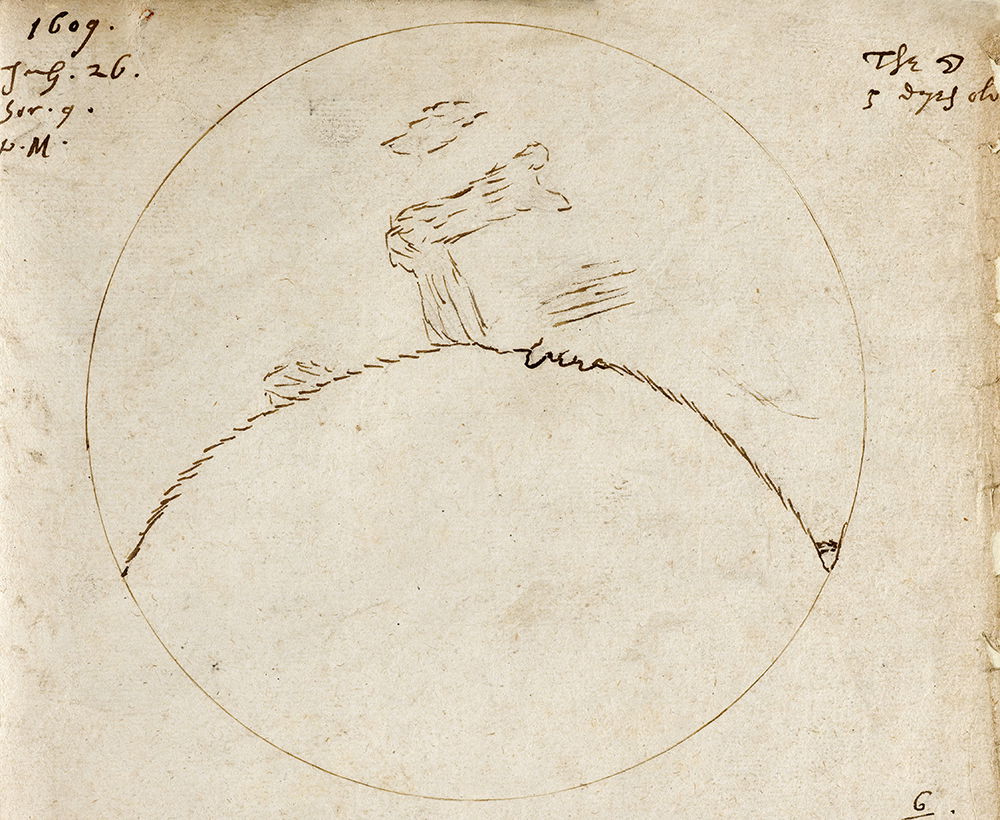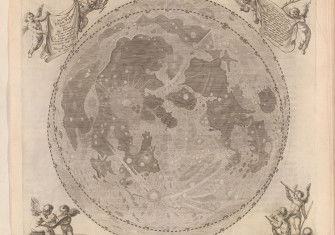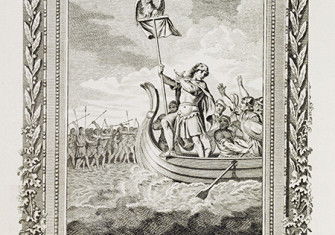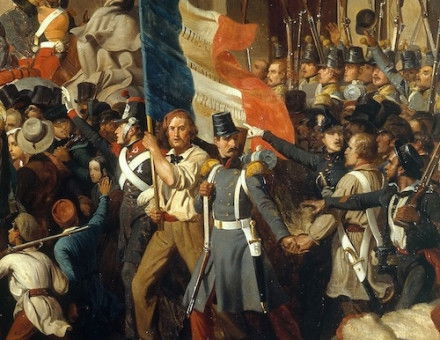The First Map of the Moon
At 9pm on 26 July 1609, Thomas Harriot pointed his telescope at a five-day-old crescent moon. It made him the first person to train such an instrument on the skies and map the moon.

To have one patron imprisoned in the Tower may be regarded as a misfortune; to have two looks like carelessness. Perhaps Thomas Harriot, Renaissance polymath and client of both Sir Walter Ralegh and Henry Percy, had good reason to direct his attention from worldly troubles.
At 9 pm on Wednesday 26 July 1609, Harriot, then living in the grounds at Syon House, pointed his telescope at a five-day-old crescent moon. It made him the first person to train such an instrument on the skies and map the moon.
Telescopes were the latest technology: one had first been patented the previous autumn in the Netherlands, and it’s possible that Harriot had built his own.
Not all his moon drawings survive, but a composite map from 1610 suggests he thought he was drawing coastlines and continents, islands and seas. It was his navigational and cartographic skill that drew him to Ralegh; he had lived for a year in Ralegh’s Roanoke colony, where he learned the Algonquian language and studied their customs.
Harriot never published, however. His work lay undiscovered until 1784; his moon map wasn’t published until 1965. It thus seems apt that, although there is a crater on the moon named in Harriot’s honour, it is on the far side, where no one can actually see it.






